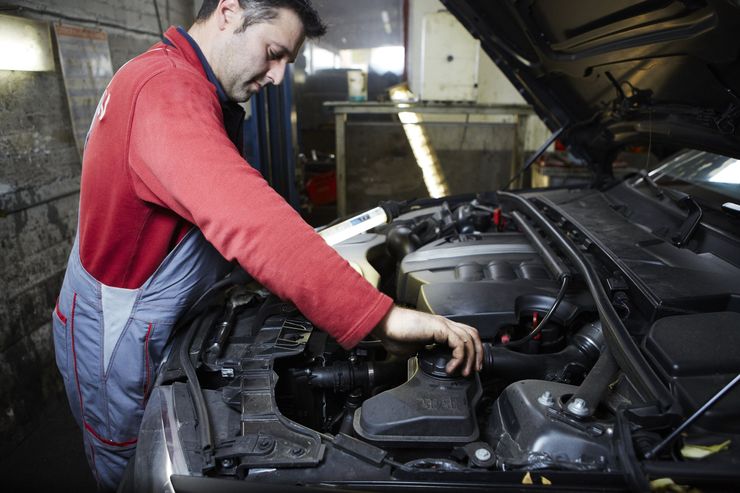Why wash the intake manifold every year, even on a relatively new car?
- November 6, 2023
- 0
What used to be the fate of owners of Rydvans and other “old women” is now also relevant for owners of new products of the Chinese automotive industry:
What used to be the fate of owners of Rydvans and other “old women” is now also relevant for owners of new products of the Chinese automotive industry:

No matter how high the quality of the gasoline, no matter how well the car is driven and maintained, over time, especially through city use, the engine begins to become dirty. Unfortunately, engine oil does not clean all parts. Carbon deposits accumulate in some places, leading to uneven operation of the combustion engine, which can ultimately lead to expensive repairs. An example is the intake manifold.
If neglected and polluted, it can cause increased fuel consumption, uneven operation of the engine itself and many other ailments that generally will not lead to anything good. Only for the worse: disassemble, clean and change in particularly advanced cases. To prevent this, the collector must be regularly subjected to “bath procedures”.
Absolutely all units of recent years are built based on environmental requirements, so you will definitely find an EGR valve that sends exhaust gases to the chambers for afterburning, as soon as you open the hood. Its hose goes straight into the intake manifold, which eventually becomes covered with carbon deposits. Whether this is good for the environment or has no meaning, we probably don’t know. But for a combustion engine, the entire environmental package is a heavy burden that can only be equalized by the car owner.
The deposits formed on the walls of the manifold can be easily washed off with a simple carburetor cleaner, but for high-quality cleaning the part must be removed. But firstly, it is not very conveniently located, and secondly, I would not want carbon bricks to fly directly into the cylinders. There will be scratches on the walls.
In addition, there are cases when pieces of carbon deposits fell on the valves after cleaning, preventing them from closing. No need to explain how it ends. A neglected collector cannot be washed simply, easily and naturally: you will have to soak it, make compresses and only then remove the “fossils”. And there will be many, don’t be surprised.
But the effect of the work done will be immediately noticeable: the car will “breathe”, pick up speed more cheerfully and powerfully, and fuel consumption will decrease. The low price of a two-three hour operation, which any normal domestic driver can perform independently, allows you to enjoy the car again and again as if it were new. And this, in turn, is worth a lot!

No matter how high the quality of the gasoline, no matter how well the car is driven and maintained, over time, especially through city use, the engine begins to become dirty. Unfortunately, engine oil does not clean all parts. Carbon deposits accumulate in some places, leading to uneven operation of the combustion engine, which can ultimately lead to expensive repairs. An example is the intake manifold.
If neglected and polluted, it can cause increased fuel consumption, uneven operation of the engine itself and many other ailments that generally will not lead to anything good. Only for the worse: disassemble, clean and change in particularly advanced cases. To prevent this, the collector must be regularly subjected to “bath procedures”.
Absolutely all units of recent years are built based on environmental requirements, so you will definitely find an EGR valve that sends exhaust gases to the chambers for afterburning, as soon as you open the hood. Its hose goes straight into the intake manifold, which eventually becomes covered with carbon deposits. Whether this is good for the environment or has no meaning, we probably don’t know. But for a combustion engine, the entire environmental package is a heavy burden that can only be equalized by the car owner.
The deposits formed on the walls of the manifold can be easily washed off with a simple carburetor cleaner, but for high-quality cleaning the part must be removed. But firstly, it is not very conveniently located, and secondly, I would not want carbon bricks to fly directly into the cylinders. There will be scratches on the walls.
In addition, there are cases when pieces of carbon deposits fell on the valves after cleaning, preventing them from closing. No need to explain how it ends. A neglected collector cannot be washed simply, easily and naturally: you will have to soak it, make compresses and only then remove the “fossils”. And there will be many, don’t be surprised.
But the effect of the work done will be immediately noticeable: the car will “breathe”, pick up speed more cheerfully and powerfully, and fuel consumption will decrease. The low price of a two-three hour operation, which any normal domestic driver can perform independently, allows you to enjoy the car again and again as if it were new. And this, in turn, is worth a lot!
Source: Avto Vzglyad
Donald Salinas is an experienced automobile journalist and writer for Div Bracket. He brings his readers the latest news and developments from the world of automobiles, offering a unique and knowledgeable perspective on the latest trends and innovations in the automotive industry.